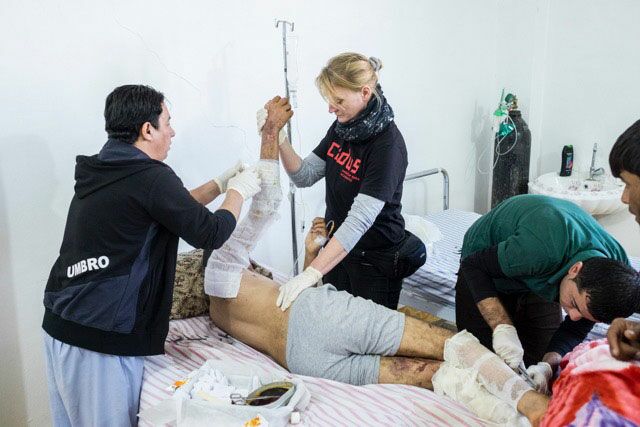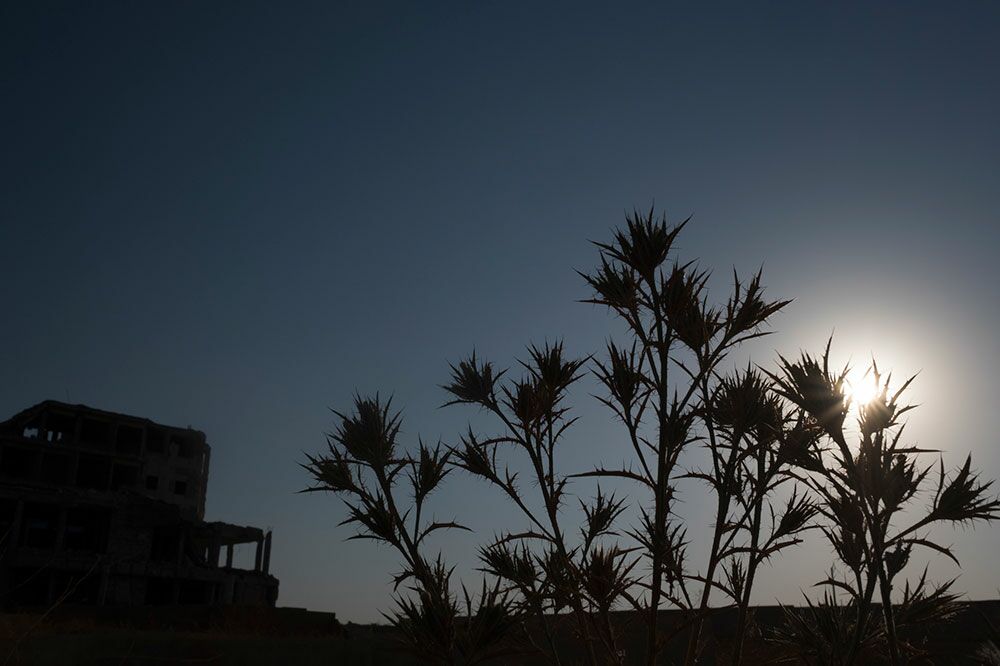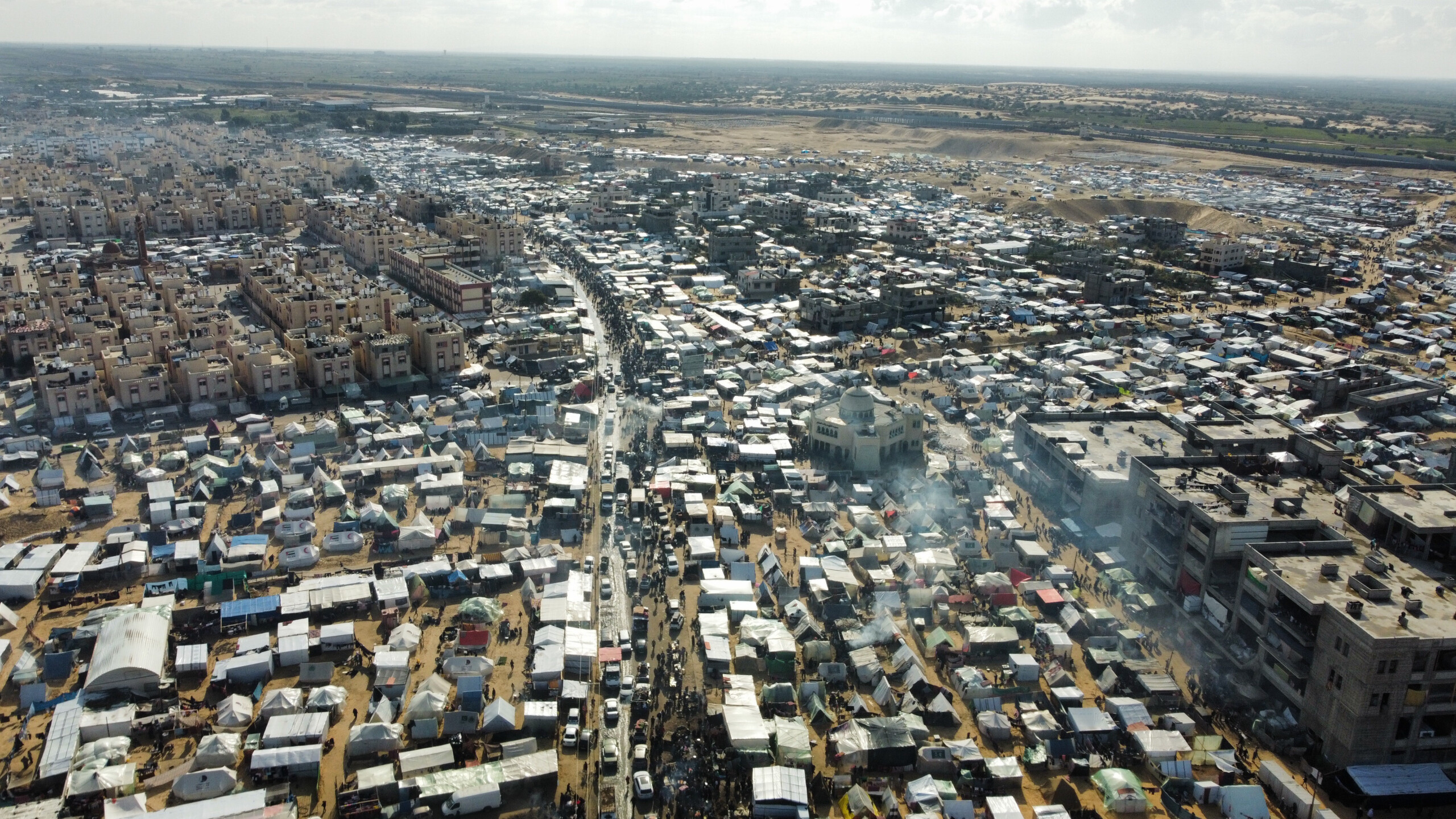
Rafah looking towards Egypt. Formerly beach, now refugee camp. Photo: CADUS
Gaza – The dream is over
The humanitarian catastrophe in Gaza is getting worse. The south is one big refugee camp, the north is completely devastated and threatened by a major famine. The fighting continues. Time and again, people suffer blast injuries or are buried under rubble. But there is hardly any rescue: it is too dangerous for civilian helpers. This mission is one of the most difficult in the ten-year history of CADUS.
The Trauma Stabilization Point
Early in the morning, we set off for the site we are working at. We drive along the Coastal Road. Endless beach, palm trees, food is distributed at a now closed fish restaurant. The flags of international humanitarian organizations fly on individual houses. In between, tents and tarpaulins as far as the eye can see. Lots of children, some flying kites. We ask: what was Gaza like before the war? It seems like it must have been beautiful here. Answer: Gaza? That was paradise. But that is over, it will never come back, Gaza no longer exists.
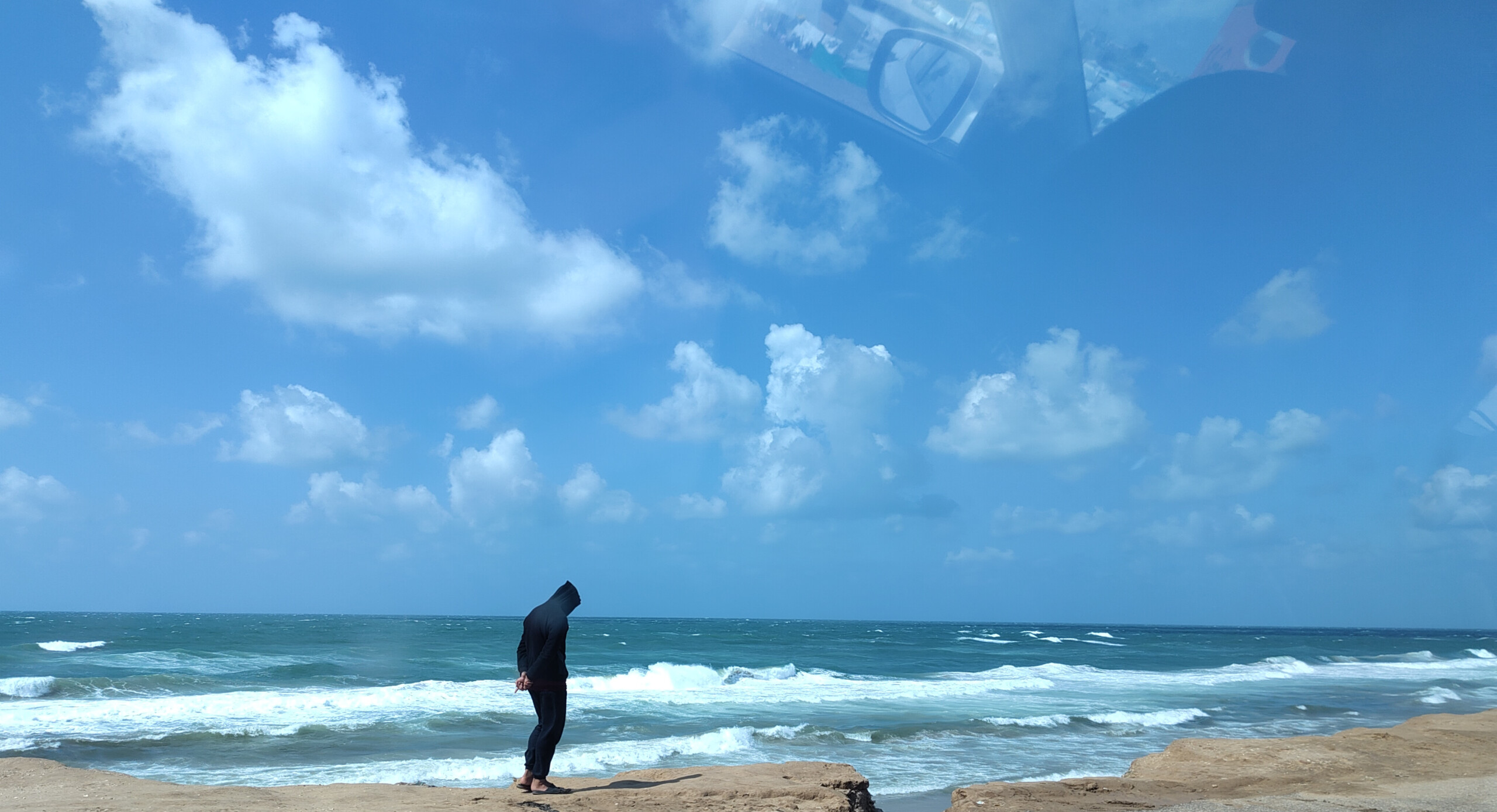
On one side the sea, on the other tents and tarpaulins as far as the eye can see: the beach at Rafah. Photo: CADUS
CADUS operates a Trauma Stabilization Point (TSP) together with the Palestinian Red Crescent Society (PRCS). The tent in which CADUS works is reserved for complicated cases: gunshot wound, shrapnel all over the body, a child who no longer responds, traffic accident, serious pregnancy complication. Changing the bandage on the girl whose leg was broken by a dropped aid package. Among other things, minor lacerations are stitched in the tent managed by PRCS. The two teams support each other and cooperation is equally important for everyone.
Help in danger
It becomes dangerous when patients have to be transported to hospital in an ambulance. Every journey carries a great risk. The PRCS ambulances, which are clearly marked with the Red Crescent symbol, are regularly subjected to attacks. This clearly contradicts International Humanitarian Law (IHL). However, our colleagues on the ground repeatedly take the risk in order to transfer patients to further medical care. In southern Gaza, some local hospitals are still partially functional, supported by field hospitals run by international aid organizations.
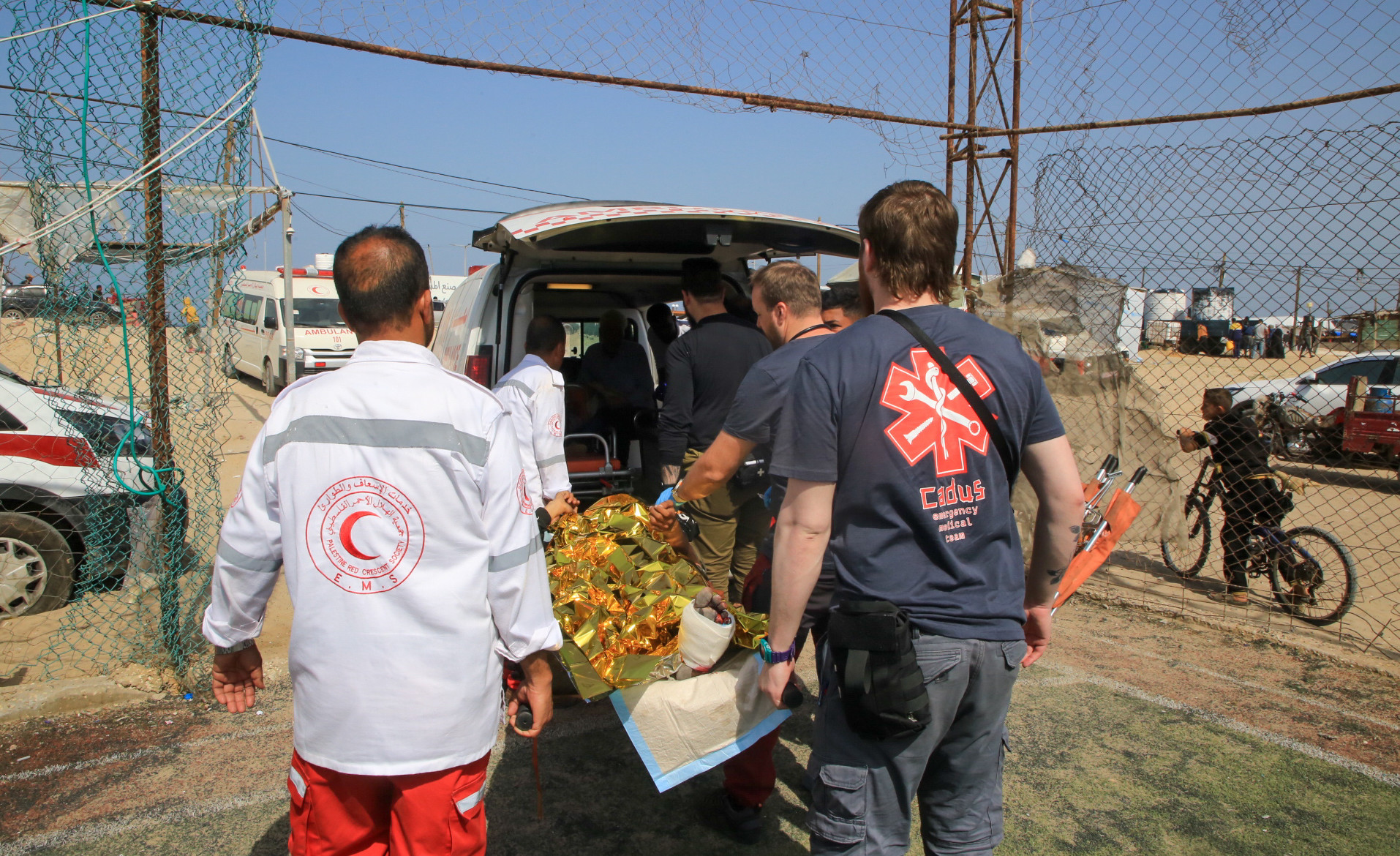
The CADUS and PRCS teams jointly carry an injured person to the ambulance. Photo: Atallah Ghaith
From the TSP we keep hearing tank shots, impacts and explosions and see smoke rising. However, we usually wait in vain for the injured to be brought to our facility by an ambulance service. When people come, they are usually transported by their family in a car or on a donkey cart. And sometimes the injured are those who tried to rescue their relatives from the rubble and were then hit by gunfire themselves. On some days, the number of bodies brought to the TSP exceeds the number of patients who make it to our facility.
Waging war is not fundamentally forbidden. However, there are strict rules regarding the protection of the civilian population. Among other things, the parties to the conflict must ensure that so-called non-combatants are spared and receive the help and supplies they need. All people who are not actively involved in the fight have a right to receive help. If the parties to the conflict cannot do this themselves, impartial humanitarian aid organizations must be granted access to the injured. The organizations themselves are under special protection and may not be attacked.*
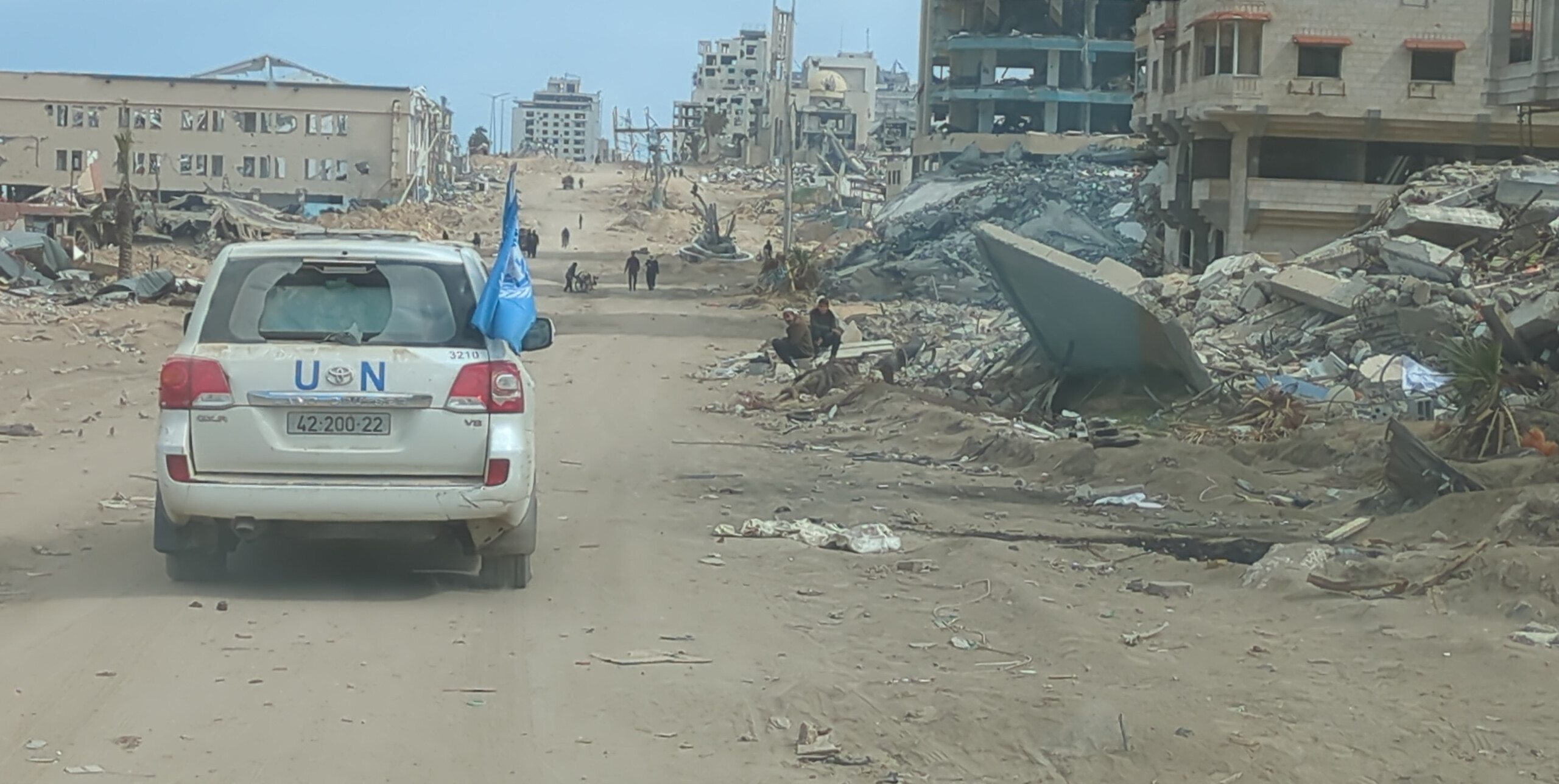
We did our first drive to northern Gaza at the beginning of March. Here we witnessed the extent of the destruction. Photo: CADUS
Evacuations urgently needed
In Gaza, we see time and again that this protection does not apply to the Palestinian civilian population and their rescue services. But for international organizations such as CADUS, the “deconfliction” mechanism, in which the position data of humanitarians is disclosed to both warring parties, has been functional and effective so far. That is why it is now up to us to carry out some of the dangerous journeys.
We soon begin to evacuate patients from the partially destroyed hospitals in the north, which are repeatedly under attack. According to the plan, we will first take the people to the south of Gaza, from where they will be evacuated to international hospitals ready to receive them, if possible. The action is coordinated by the WHO EMT structure. As a “Specialized Care Team for Pre-Hospital Care”, we are currently the only international organization on the ground that can carry out such a mission. Over the past few weeks, we have been working hard on the preparations for the MEDEVACs, including intensive fundraising together with organizations that support us in this project. The time pressure to start the evacuations is enormous. There are lists of people who are designated for this. But every day names are removed from these lists: help comes too late for them.
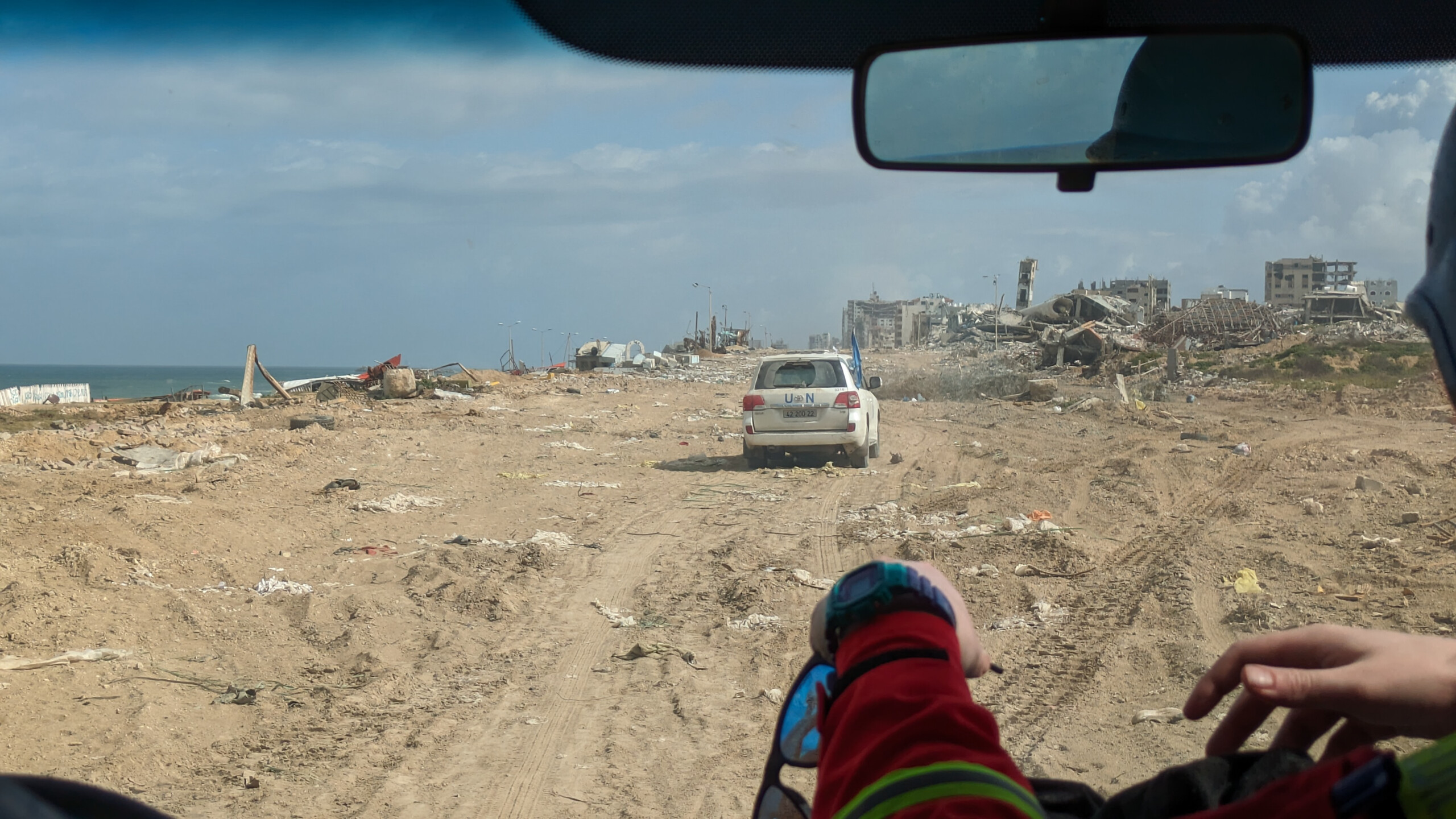
The road conditions in the north are extremely difficult. We need to be well prepared for the MEDEVACs. Photo: CADUS
Where we can evacuate to if Israel launches an offensive on Rafah in southern Gaza is a question that has yet to be resolved. And also the question of where all the people should go who have already fled to the south, lost everything and are now living in tents. Fear, despair and a lack of prospects are omnipresent. And yet we see how people don’t give up, support each other and look for a way out. For many, however, it is clear that they can only find a solution on the other side of the border; they no longer have a future in Gaza. This dream is over, forever.
* MSF: The Practical Guide to Humanitarian Law (online edition, page “Protected Persons”)
* ICRC: International Humanitarian Law Databases (collection of IHL-relevant treaties)
By Corinna Schaefer
Stay informed about our missions, events and humanitarian emergency aid topics – with our newsletter!
Newsletter registration
I want to unsubscribe from the newsletter.


